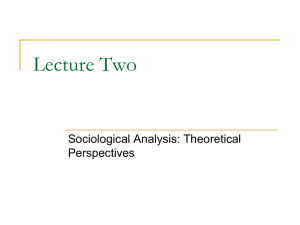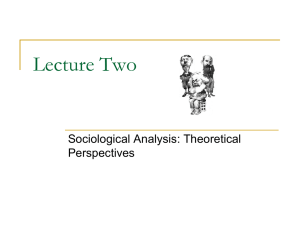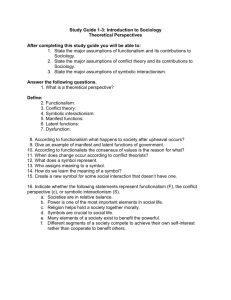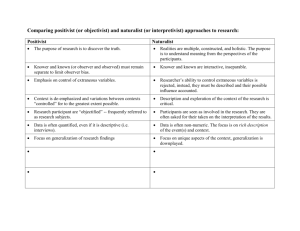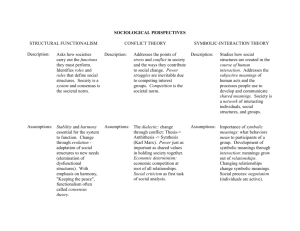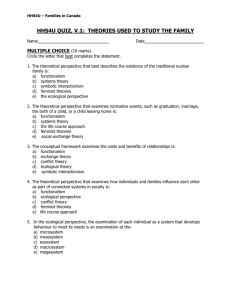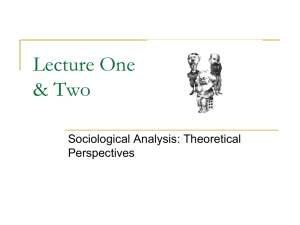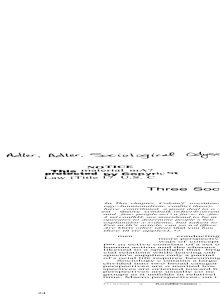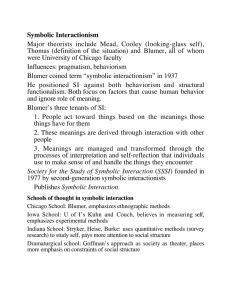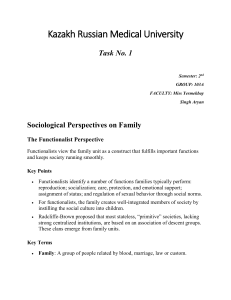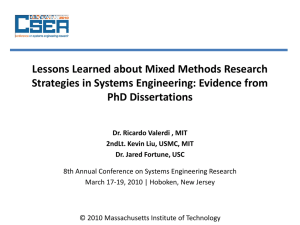Buna
advertisement
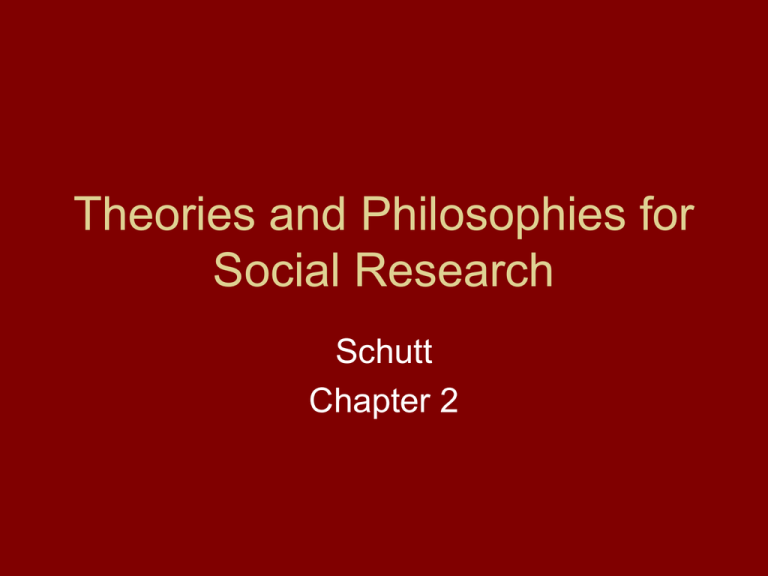
Theories and Philosophies for Social Research Schutt Chapter 2 Theoretical Perspectives in Social Science • Theory: • A logically interrelated set of propositions Goal: to make sense of/ explain social phenomena. • Provides a network of explanation • Types: • 1.Functionalism • 2. Conflict Theory • 3. Symbolic Interactionism 1. Functionalism • A social theory that explains social patterns in terms of their consequences for society as a whole • Emphasizes the interdependence of social institutions • Interest in maintaining social order • Example: education socializing students to decrease ethnic tensions Functional Theorist • Durkheim • Organic solidarity— • Division of labor created new form of solidarity and interdependence • that strengthened social bonds • No fundamental conflict between individual interests and social interests— • Part of organic whole 2. Conflict Theory • Identifies conflict between social groups as the primary force in society. • Understanding the bases and consequences of conflict is the key to understanding social processes. • Example: Competition over scarce resources is catalyst of antagonistic ethnic conflicts, • Relation of migrants to unemployment. Conflict Theorists • • • • • • • • Karl Marx—struggle for equality is focus C Wright Mills Sociology—stratification emphasis explains different access to resources— inequality as source of conflict Key:Contradiction in social class interests Realistic Conflict theory— competition over scarce resources 3. Symbolic Interactionism • Focus on the symbolic nature of social interaction—how social interaction conveys meaning and promotes socialization. • Self understood in interaction with others. Symbolic interactionist Theorists • George Herbert Mead • understands individuals’ conceptions of themselves and of others as the result of social interaction and emmphasizes the way in which “meanings’ are constructed. • Example: understanding the Buna-socializing over coffee by Muslim women from East Africa. • Or a study of “quincianera” celebrations-Mexican American society Using Social Theory • 1. Relationship betw Research and Theory • middle range aspect • multiple approaches • 2. Paradigms and paradigm shift • Set of beliefs that guide sci. research • assumptions, theories-unquestioned • change—affects prevailing beliefs Social Research Philosophies • 1. Positivism/Postpositivism • 2. Interpretivist 1.Positivist/postpositivisr • • • • • • • • Positivist--Objective reality exists Apart from the perceptions of those who observe Goal of science is to better understand this reality Postpositivist—belief in an obj. reality Recognizes complexity and bias of researchers goal: achieve inter subjective agreement— agreement among scientists about nature of reality Positivist/Post positivist Research Guidelines • 1. Test ideas without being too personally invested in the outcome • 2. Plan and carryout investigations systematically • 3. Document all procedures and disclose them publicly • 4. Clarify assumptions • 5. Specify the meaning of all terms Cont. • 6. Maintain a skeptical stance toward current knowledge • 7. Replicate research and build social theory • 8. Search for regularities or patterns Positivist research goal • Advance scientific knowledge • Argues that values are beyond the scope of science. • Post-positivist analysis • However— value neutral not a reality • values are part of theories/paradigms • always a part of research 2. Interpretivism and Constructivism • Interpretivist philosophy • social reality is socially constructed • goal: understand what meanings people • give to reality—not to understand • reality apart from these meanings • Constructivist paradigm • how different participants in soc setting • construct their beliefs Research guidelines and goals • Guidelines: • 1. Identify participants and solicit issues • 2. Solicit feedback—agree and disagree • Goal: Creating change • Whyte—Participatory action research • researcher collaborates with participants • identified goals for change • Integrated Philosophy-statistical vs interpr

